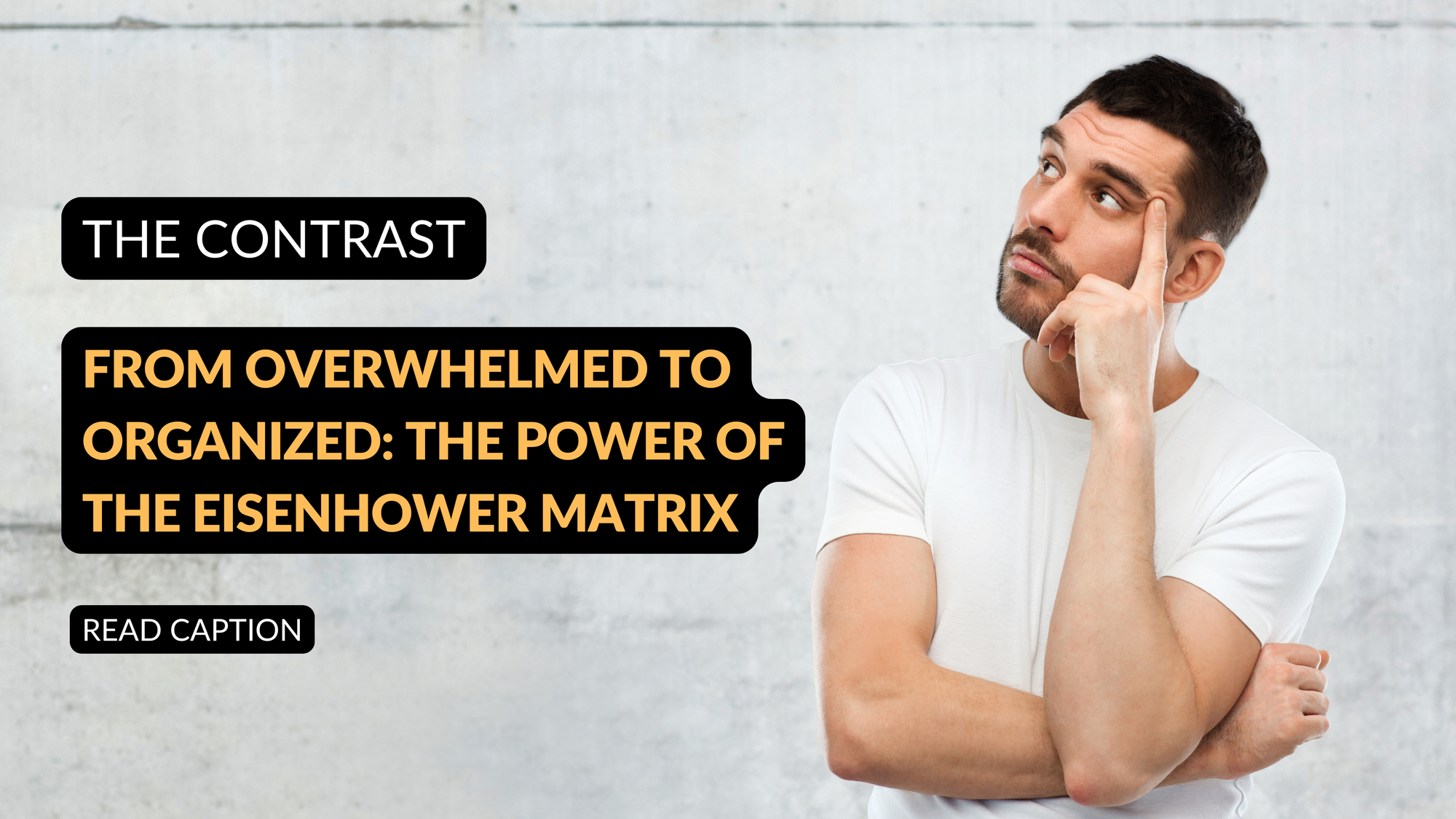From Overwhelmed to Organized: The Power of the Eisenhower Matrix

Do you ever feel like you’re constantly busy but never truly productive? That’s where the Eisenhower Matrix comes in. Named after Dwight D. Eisenhower, the 34th President of the United States, this time-management tool helps you prioritize tasks based on their urgency and importance, so you can focus on what really matters.
The Eisenhower Matrix categorizes tasks into four quadrants: Do First, Schedule, Delegate, and Eliminate. Here’s how it works and how you can use it to reclaim your time and energy.
How the Eisenhower Matrix Works
The matrix is a simple 2x2 grid divided into four quadrants:
- Urgent and Important (Do First): Tasks that require immediate attention and have significant consequences if not done.
- Important but Not Urgent (Schedule): Tasks that contribute to long-term goals but don’t need to be done right away.
- Urgent but Not Important (Delegate): Tasks that need to be done quickly but don’t require your expertise.
- Neither Urgent Nor Important (Eliminate): Tasks that don’t add value and waste your time.
Why the Eisenhower Matrix is Effective
- Simplifies Decision-Making
By categorizing tasks, you’ll know exactly where to focus your energy.
Example: Instead of stressing over your overflowing to-do list, you’ll prioritize high-impact activities. - Reduces Stress
Knowing what to tackle first eliminates the overwhelm of juggling multiple tasks.
Example: Tackling urgent and important tasks early reduces last-minute panic. - Promotes Delegation
Identifying tasks that can be handed off ensures you’re focusing on what only you can do.
Example: Delegating routine emails frees up time for strategic planning. - Eliminates Time-Wasting Activities
Recognizing and removing tasks that add no value ensures you’re not wasting your energy.
Example: Skipping unnecessary meetings gives you more time to work on critical tasks. - Fosters Long-Term Success
By scheduling important but not urgent tasks, you’ll achieve meaningful goals without procrastination.
Example: Consistently working on a skill or project ensures steady progress.
How to Use the Eisenhower Matrix
1. Identify Your Tasks
Write down everything you need to do, from major projects to minor errands.
Why It Works: A clear list prevents tasks from slipping through the cracks.
2. Categorize Tasks into Quadrants
Place each task in the appropriate quadrant:
- Do First: Tasks with deadlines or critical consequences.
- Schedule: Tasks that are valuable but not time-sensitive.
- Delegate: Tasks that someone else can do effectively.
- Eliminate: Distractions or unproductive tasks.
Why It Works: Categorizing helps you focus on what matters most.
3. Act on Each Quadrant
- Do First: Complete these tasks immediately.
- Schedule: Add these to your calendar with deadlines.
- Delegate: Assign these tasks to others.
- Eliminate: Drop these tasks from your list entirely.
Why It Works: A clear action plan ensures nothing important is overlooked.
4. Review Regularly
Revisit your matrix daily or weekly to adjust priorities and stay on track.
Why It Works: Regular updates reflect changing priorities and keep you aligned with your goals.
Practical Example
Imagine you’re preparing for an upcoming product launch:
- Urgent and Important (Do First): Finalizing the marketing strategy before the deadline.
- Important but Not Urgent (Schedule): Writing a long-term content plan for post-launch engagement.
- Urgent but Not Important (Delegate): Responding to routine client emails.
- Neither Urgent Nor Important (Eliminate): Scrolling through social media.
By using the Eisenhower Matrix, you’ll know exactly what to do, what to schedule, and what to delegate, allowing you to focus on delivering the best results.
Tips for Success with the Eisenhower Matrix
- Be Honest with Yourself: Don’t label everything as urgent or important.
- Start Small: Apply the matrix to your daily tasks before scaling it to larger projects.
- Use Tools: Apps like Trello, Notion, or Todoist can help you visually organize your matrix.
- Stay Flexible: Priorities change, so be prepared to adjust your matrix as needed.
- Focus on Value: Always ask, “Does this task align with my goals?”
Conclusion
The Eisenhower Matrix isn’t just a productivity tool—it’s a mindset shift. By focusing on what’s truly important and eliminating distractions, you’ll achieve more while feeling less overwhelmed. Whether you’re managing a team, planning personal projects, or simply trying to stay organized, the Eisenhower Matrix is your roadmap to clarity and control.
Start using the Eisenhower Matrix today and watch your productivity soar. Your time is precious—make the most of it!
